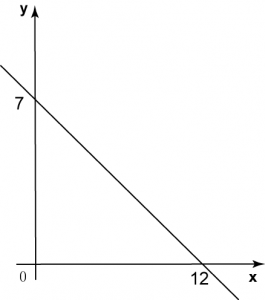5.6.2 The Straight Line, SPM Paper 1 (Short Questions)
Question 6:
Diagram below shows a straight line RS with equation 3y = –px – 12, where p is a constant.
It is given that OR: OS = 3 : 2.
Find the value of p.
Solution:
Method 1:
Substitute x= –6 and y = 0 into 3y = –px – 12:
3(0) = –p (–6) – 12
0 = 6p – 12
–6p = –12
p = 2
Method 2:
OR: OS = 3 : 2
Coordinates of S = (0, –4)
Gradient of the straight line RS =
Given 3y = –px – 12
Rearrange the equation in the form y = mx + c
Question 7:
The above diagram shows two straight lines, KL and LM, on a Cartesian plane. The distance KL is 10 units and the gradient of LM is 2. Find the x-intercept of LM.
Solution:
Let point N be = (0, 2).
Using Pythagoras’ Theorem,
LN = √102 – 62 = 8
Point L = (0, 2 + 8) = (0, 10)
y-intercept of LM = 10











